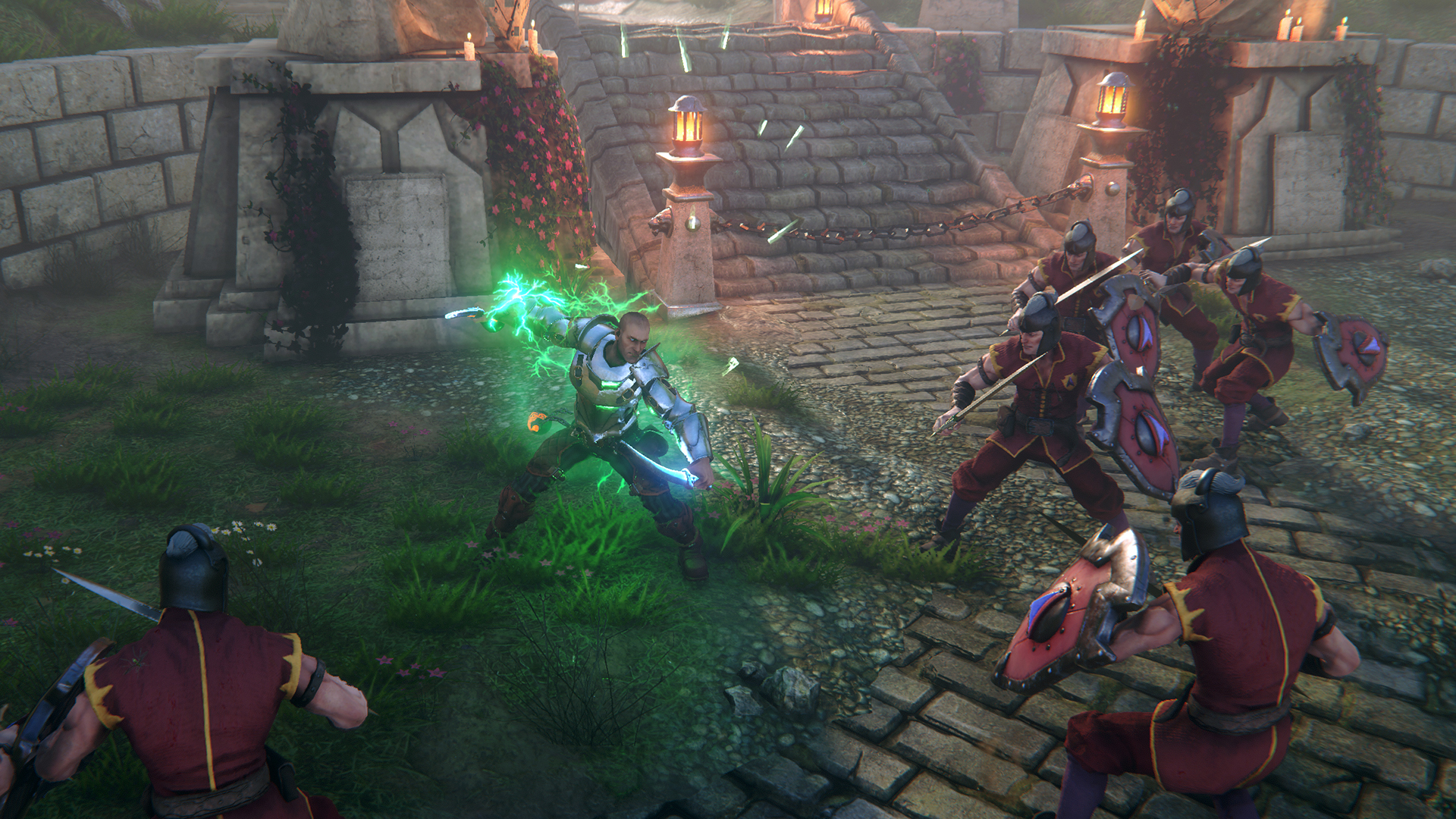

I never once reacted to a battle with “oh well, I guess I have to go deal with this now”. These battles work because they’re short, they’re just interactive enough to be more than a minigame, and they look great. It’s a hearty enough diversion to matter. You might even want to hook up a gamepad. It’s time for blade to meet bone, with just enough dodging and blocking to keep it from being clickclickclick. That Rat Cleaver, that spell that fires ice shards in all directions, and that weird shield come to life. The battles, played out like a modest helping of God of War, are brief action interludes where your equipment earns its keep. Hand of Fate plays it almost to the opposite degree. As great as those battles are, they can be interruptions. Even though the combat in Pillars of Eternity, Atilla: Total War, and XCOM is top-notch, it’s a completely different groove than the larger game where you spend a lot of your time. In a lot of games, combat can be an “oh-well-I-guess-I-have-to-go-deal-with-this-now” affair. Not a map, but a tree of consequences embodied in a deck of cards. It’s exploring in the best sense of the word. As you play, you constantly make choices, with almost no sign of the usual facile “kick the puppy/pet the puppy” choices.

#HAND OF FATE BOARD GAME FREE#
It’s a collectible set of nested Russian dolls that tell stories from shreds of narrative, written with a simple and evocative style, mercifully free of the self-importance you’ll find in so much videogame writing. The ongoing saga of Hand of Fate is itself a deck of cards you put together, each card resulting from other cards, each card leading to other cards. Instead, you collect these cards as mementos from your adventures. Not collect as the dirty word we know from collectible card games, with expensive rarities and power curves and various other money-making tricks that pervert the appeal of cards. And it doesn’t just get cards as the perfect format for an evocative title above a piece of distinct artwork (the artwork in Hand of Fate is a hybrid of the medieval woodcuttings you might find in a volume of Blake poetry and the illustrations in a collection of ghastly children’s faerie tales). Hand of Fate doesn’t just get cards as the tactile things you flip up on a table, or shuffle into a deck, or riffle smartly with your fingertips. So when a videogame like Hand of Fate comes along and really gets the point of cards, I can’t help but notice. The very 1s and 0s are coin flips, which is really just a two-sided die. You could theoretically roll a six-sided die all day and never conjure a six into existence.Ĭomputer games, conjured forth from the stored possibilities of 1s and 0s, are usually die rolls. A six is no more inevitable than a lottery win or a lucky guess. A die roll, which is always an if, doesn’t exist until it happens. It will flip up by the time you’ve gone through the deck and there’s nothing you can do to stop it.


 0 kommentar(er)
0 kommentar(er)
